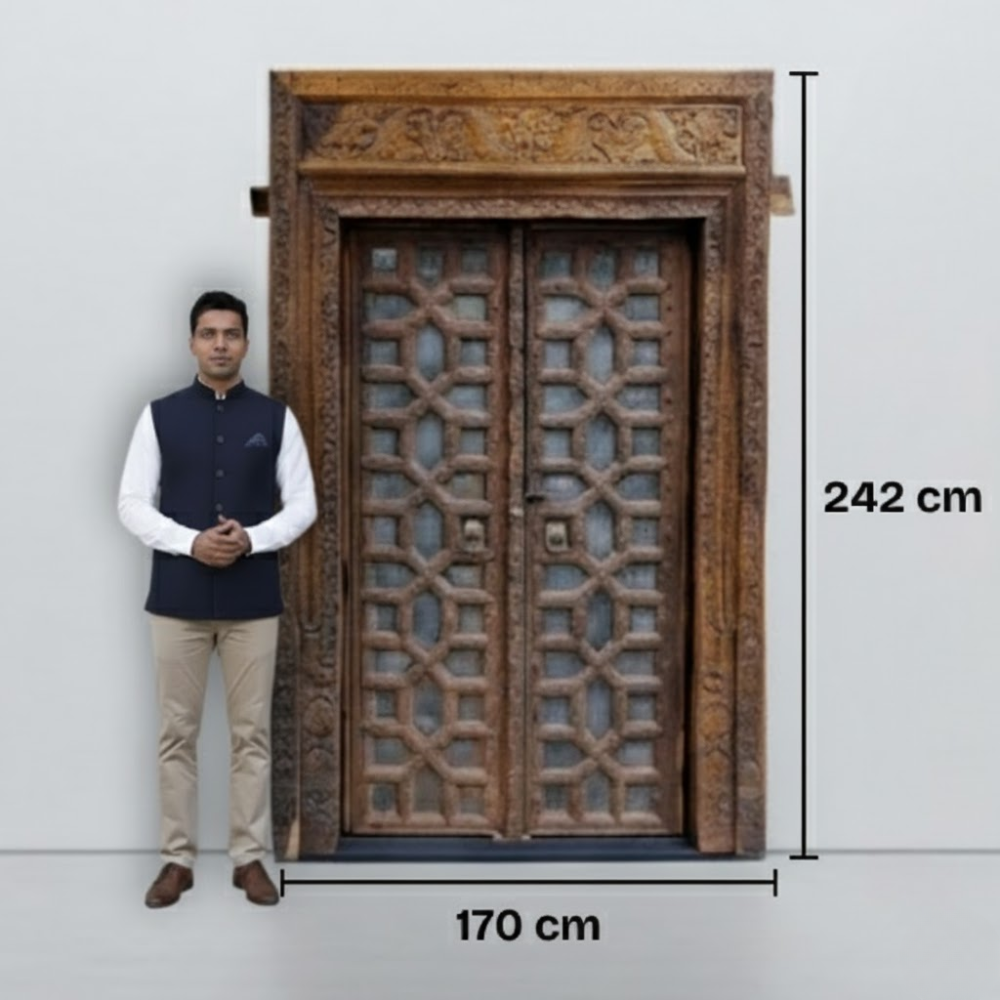
Price
Materials
Period
Place of origin
SKU
Dimensions
Available Stock: 1
About the product
Antique Mid-19th Century Indian Haveli Door
Handcrafted Teakwood with Iron Detailing | Chakra Motifs | Rustic White Patina | Gujarat, India
A Symbol of Protection, Prestige, and Artisan Heritage
This mid-19th century Haveli Door from Gujarat captures the spirit of India’s architectural legacy. Crafted from solid teakwood and strengthened with hand-forged ironwork, it once stood at the entrance of a noble Haveli, representing both prosperity and divine guardianship.
The softly weathered white patina tells the story of centuries of use and natural ageing, blending beautifully with the dark iron strapping and ornamental lockwork. The central design features chakra-inspired iron motifs, representing balance, energy, and the eternal flow of life. Each element was created to protect the home while displaying the skill and devotion of its maker.
Architectural Elegance & Key Features
Authentic mid-19th century origin from Gujarat, India
Hand-carved solid teakwood with original forged iron detailing
Chakra-patterned ironwork symbolising harmony and protection
Naturally aged chalk-white patina with visible layered textures
Ornately carved frame with floral lintel and side post detailing
Suitable as a functional door, wall-mounted feature, or architectural centrepiece
A rare collector’s piece curated exclusively by Regen Bespoke
Cultural & Historical Significance
In Gujarati tradition, the doorway of a Haveli was both an architectural statement and a spiritual threshold. The chakra symbols were believed to channel divine energy and protect against negative forces. Teak was chosen for its strength, durability, and beautiful grain, which allowed detailed carving that could endure centuries of weather and use.
This door embodies that enduring craftsmanship, combining artistic detail with symbolic meaning and timeless material quality.
Styling Tip
Use this antique door as a statement feature in your home or project. It can be:
A functional entrance in a heritage or contemporary setting
A wall-mounted sculptural piece in a living room or hallway
A dramatic backdrop in boutique interiors, hotels or galleries
Pair it with brass accents, stone floors, and textured walls to highlight its natural patina and carved details.
Specifications
Origin: Gujarat, India
Era: Mid-19th Century (c. 1850s)
Material: Solid teakwood with forged ironwork
Dimensions: Width 170 cm × Height 242 cm × Depth 24 cm
Weight: Approx. 300 kg
Condition: Structurally sound with original patina and hardware preserved
Delivery & Collection
Due to its size and weight, this piece qualifies for specialist handling and white-glove delivery across the UK. Local collection is available by appointment. Please contact Regen Bespoke for delivery arrangements or export support.
Exclusively at Regen Bespoke
A piece of cultural heritage where history, craftsmanship, and design meet in perfect harmony.






